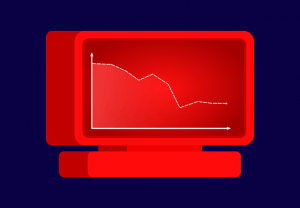 You’ve learned many times over throughout this manual when you need to enter into a stock position. Whether it entails a excellent upward trend or just a pattern showing a substantial long-term change for a stock, the choices you have for getting to a stock are diverse and deserve to get seen for how precious they are. However, after a time, you’re going to need to sell your shares. You should never think you could hold onto any inventory for as long as you desire. Rather, you should consider when you will sell something at the ideal point.
You’ve learned many times over throughout this manual when you need to enter into a stock position. Whether it entails a excellent upward trend or just a pattern showing a substantial long-term change for a stock, the choices you have for getting to a stock are diverse and deserve to get seen for how precious they are. However, after a time, you’re going to need to sell your shares. You should never think you could hold onto any inventory for as long as you desire. Rather, you should consider when you will sell something at the ideal point.
Examine Dividend Changes
Have a look at some cases where the dividends on the stock are beginning to fall in value. Review the inventory and the business to learn what’s causing that change. There could be significant issues within the business such as a loss of profits or legal activities which are causing the dividend value to modify. The smallest decline in the volatility ought to be a cause for concern. Losing one penny on 10,000 shares of a stock would lead to a reduction of $100 on your gains. Needless to say, that’s only 1 example of what might occur.
where the dividends on the stock are beginning to fall in value. Review the inventory and the business to learn what’s causing that change. There could be significant issues within the business such as a loss of profits or legal activities which are causing the dividend value to modify. The smallest decline in the volatility ought to be a cause for concern. Losing one penny on 10,000 shares of a stock would lead to a reduction of $100 on your gains. Needless to say, that’s only 1 example of what might occur.
Review Your Cost Target
A practical strategy for investing is to remain with a particular price target. This ought to be the range where you want your stock to be irrespective of the sort of trade you’re entering. A quarterly forecast for the forthcoming year will be able to help you to get an idea about what is occurring with a stock. This includes an overview of how a business derives its earnings. This should help you to ascertain an approximate speed for which the inventory might grow over time. This is simply a projection of what’s going to happen based on several variables within the enterprise. You would clearly need to use a stop-loss order at this stage in case a company fails to reach its prediction.
investing is to remain with a particular price target. This ought to be the range where you want your stock to be irrespective of the sort of trade you’re entering. A quarterly forecast for the forthcoming year will be able to help you to get an idea about what is occurring with a stock. This includes an overview of how a business derives its earnings. This should help you to ascertain an approximate speed for which the inventory might grow over time. This is simply a projection of what’s going to happen based on several variables within the enterprise. You would clearly need to use a stop-loss order at this stage in case a company fails to reach its prediction.
Once the Volume Slows
The volume for your inventory will make a large impact on the development of your stock. What happens when the volume begins to taper off and the inventory isn’t as popular as it was? The lack of volume may be a indication that your stock isn’t going to keep moving in precisely the exact same way you had wished it would. A stock that was growing in value could show resistance when its volume decreases. This indicates people aren’t as excited about purchasing a stock as they was. Those people will start selling that stock soon. Hence, you should sell your inventory when possible so that you can make certain you get from a position before it becomes less attractive.
It can be devastating when a business goes bankrupt. There’s a possibility that a company might come from the bankruptcy more powerful than ever, such as what happened with different auto companies in america. A bankruptcy is all about ensuring that a company can reorganize itself and maintain a challenging situation from becoming worse.
business goes bankrupt. There’s a possibility that a company might come from the bankruptcy more powerful than ever, such as what happened with different auto companies in america. A bankruptcy is all about ensuring that a company can reorganize itself and maintain a challenging situation from becoming worse.
The issues surrounding a company might be too important. The major issue is that the insolvency might keep a company from being profitable and viable for investment. The value of this stock more than likely will decrease because of what is going on.
If you become aware of a stock is going to decline in value and important signs related to a bankruptcy, you should sell your inventory. People may not suffer from losses because of an imminent bankruptcy until it’s too late and the insolvency really occurs.
· A business is beginning to cut its prices but isn’t specifying why it’s doing so.
· Many seasoned executives or managers associated with a company may be leaving the organization. They may also have more detailed inside information about what is going on within the business that’s causing it to fall apart.
managers associated with a company may be leaving the organization. They may also have more detailed inside information about what is going on within the business that’s causing it to fall apart.
· Management may also be silent and not prepared to disclose information on what’s happening or why specific business decisions are being made.
· Revenues are falling significantly and don’t seem to show any signs of the worth rebounding.
· The cash flow statements may also reveal some real changes. These include changes in how maintenance programs for equipment and other regular efforts may be changing.
Tax Concerns for Losing Stocks
A fantastic part about instances where your stocks shed value is they may offer you a potential tax write-off. Any short-term losses which you suffer from the sale of shares may offset the short-term gains. You may sell your stocks if they’re losing value to help control any taxes you need to pay. You could do it specifically during the later portion of the year if you’ve got anything you’ve held for some time and you will need to eliminate it. While you might eliminate money from the sale of the inventory, you’ll at least keep your taxes from becoming too large.
instances where your stocks shed value is they may offer you a potential tax write-off. Any short-term losses which you suffer from the sale of shares may offset the short-term gains. You may sell your stocks if they’re losing value to help control any taxes you need to pay. You could do it specifically during the later portion of the year if you’ve got anything you’ve held for some time and you will need to eliminate it. While you might eliminate money from the sale of the inventory, you’ll at least keep your taxes from becoming too large.
Review all of your positions to ascertain when selling your stock at a specified time is suitable for your tax control functions. Get in touch with a local accountant or other tax planning specialist locally for extra information on what could be done to decrease your tax burden.
Prevent Emotional Concerns
It’s always tough to sell a stock,  but it may be even more difficult for you to sell something which you’ve had for a substantial time. Perhaps it might have been the first stock that you invested in.
but it may be even more difficult for you to sell something which you’ve had for a substantial time. Perhaps it might have been the first stock that you invested in.
You could always add long-term shares to your portfolio, but it does not mean that you should continue to maintain those stocks forever. You must ignore the emotional factors that include having a stock. Such emotions may be a burden to you as you fight to maintain your investments positive.